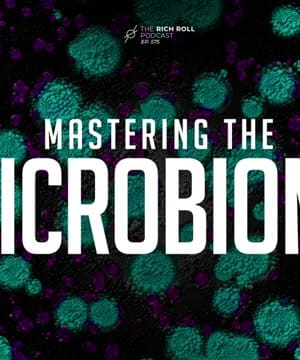How does endometriosis impact levels of progesterone
Sources:
Endometriosis can significantly alter progesterone levels, often due to the need for hormone management after treatment. For example, women who have had a hysterectomy for endometriosis often need progesterone alongside estrogen to manage residual endometrial tissue and prevent symptoms from flaring up. In some cases, progesterone is taken for years, or indefinitely, to keep any remaining tissue quiescent 1 .
Additionally, endometriosis can disrupt the natural balance of hormones, including progesterone, by increasing inflammation and altering how the body processes cholesterol, a building block for hormones including progesterone. A plant-based diet can help reduce inflammation and promote hormonal balance by lowering cholesterol levels and increasing fiber intake, which aids in estrogen and progesterone metabolism, thus potentially alleviating some symptoms of endometriosis 2 .
For personalized treatment, managing hormone levels post-surgery is crucial as each woman's experience with endometriosis and hormone replacement therapy (HRT) can vary widely 1 .
RELATED QUESTIONSSo are progesterone levels elevated or decreased with endometriosis?
Sources:
Progesterone levels are typically decreased in individuals with endometriosis due to the complex hormonal disturbances the condition causes. For example, hormone replacement therapy (HRT) post-hysterectomy often includes progesterone to manage any residual endometrial tissue and minimize symptoms. With endometriosis, the lack of adequate progesterone can lead to flare-ups of symptoms, necessitating supplementation often for extended periods, or sometimes indefinitely 1.
Additionally, endometriosis can disrupt the balance of hormones, including progesterone, due to increased inflammation and altered metabolism of cholesterol, which is a building block for progesterone production 2. Individual treatment and precise hormone management are crucial because each woman's response to endometriosis and HRT can be very different 1.
RELATED QUESTIONSWhat symptoms are caused by decreased progesterone?
Sources:
Decreased progesterone can cause several symptoms, impacting both physical and mental health. Key symptoms include:
- Mood-Related Symptoms: Anxiety, irritability, and depression are common since progesterone has a natural calming effect and acts as an antidepressant 1 2.
- Physical Symptoms: These can include headaches, cramping, acne, weight gain, and breast tenderness due to the hormone's role as a natural diuretic and its balance with estrogen 1 3.
- Sleep Disturbances: Difficulty falling or staying asleep is often linked to low progesterone, affecting overall sleep quality 1 4.
- Reproductive Health Issues: Infertility, irregular menstrual cycles, and increased PMS symptoms are prevalent as progesterone is crucial for menstrual cycle regulation and fertility 1 5.
- Brain Fog: Issues like fuzzy thinking or lack of focus can arise due to progesterone's role in brain health 4.
- Bone and Joint Issues: Joint pain and potential bone health declines can occur, highlighting progesterone’s importance in overall bone maintenance 2.
Overall, progesterone imbalances, particularly decreases, affect multiple systems in the body and are often interlinked with stress levels, making it essential to address both hormonal balance and lifestyle factors.
RELATED QUESTIONSHow does low progesterone impact breast size
Sources:
Low progesterone impacts breast size primarily by influencing their growth and density. Progesterone plays a key role in balancing the effects of estrogen, which is responsible for stimulating breast tissue growth. Here's how low progesterone affects breasts:
-
Breast Growth and Tenderness: Estrogen promotes the growth and development of breast tissue, while progesterone helps regulate and moderate this growth. When progesterone is low, estrogen's effects may become more pronounced, potentially leading to increased breast size and tenderness due to excessive cell proliferation 1 2.
-
Breast Density: Progesterone helps to manage cell division in the breasts, acting as a "lawnmower" to the "fertilizer" effects of estrogen. Without adequate progesterone, the unchecked growth of cells can lead to denser breast tissue, which may increase the risk of fibrocystic changes and potentially breast cancer over time 1.
-
Drooping and Structural Changes: Insufficient progesterone can also contribute to structural changes in the breast, leading to drooping or sagging, as the hormone helps maintain the supportive structure of breast tissue 3.
In summary, low progesterone can cause both visible changes in breast size and structural density, making it essential to maintain a hormonal balance for breast health.
RELATED QUESTIONS-
What are other symptoms of low progesterone?
Sources:
Low progesterone can lead to a wide range of symptoms, affecting various aspects of physical and mental health. Here are some key symptoms:
-
Mood and Mental Health:
-
Physical Symptoms:
-
Reproductive Health:
-
Other Symptoms:
These symptoms highlight the importance of maintaining hormonal balance and the potential need for medical consultation to address underlying hormonal issues.
RELATED QUESTIONS-
What are treatments for low progesterone?
Sources:
Treatments for low progesterone include various approaches depending on the underlying cause and the individual's specific needs. Experts highlight several options:
-
Hormone Replacement Therapy (HRT):
- Bioidentical Progesterone: Administered as creams, oral supplements, or suppositories. Oral bioidentical progesterone can improve sleep and reduce anxiety due to its calming effects on the brain 1 2.
- Progesterone can also be taken for specific periods in the menstrual cycle, such as 14 days on and 14 days off, to mimic the natural cycle 3.
-
Supplements:
- Chaste Tree (Vitex): A natural supplement that can help raise progesterone levels by encouraging ovulation and improving luteal phase progesterone production 4.
-
Lifestyle Adjustments:
- Stress management and regular eating habits to avoid blood sugar drops, which can negatively impact progesterone receptors in the brain 2.
- Monitoring and treating thyroid dysfunction and ensuring sufficient levels of DHEA, as these can affect the health of the corpus luteum and thereby progesterone production 5.
These treatments should be tailored to the individual's specific hormonal profile and needs, often determined through hormone testing and guided by a healthcare professional.
RELATED QUESTIONS-
What are treatments for low progesterone?
Sources:
Treatments for low progesterone involve both medical interventions and lifestyle modifications. Here are several approaches recommended by experts:
-
Hormone Replacement Therapy (HRT):
- Bioidentical Progesterone: This can be administered as oral supplements, creams, or suppositories. Oral bioidentical progesterone is particularly noted for its calming effects on the brain and improving sleep quality in women undergoing perimenopause or experiencing sleep disruption 1 2.
- A low dose of progesterone can be taken cyclically (e.g., from day 21 to day 28 of the menstrual cycle) to alleviate symptoms like PMS 3.
-
Supplements:
- Chaste Tree (Vitex): This herb can naturally increase progesterone levels by promoting ovulation and encouraging luteal phase progesterone production, which has been effective in some cases of infertility and hormonal imbalance 4 5.
- Other adaptogenic herbs like Dong Quai and Ashwagandha can support adrenal function, which indirectly helps in maintaining progesterone levels 6.
-
Lifestyle Adjustments:
-
Other Approaches:
These treatments are typically tailored based on individual hormonal profiles, and it's crucial to consult with healthcare professionals to determine the most appropriate approach.
RELATED QUESTIONS-
How does the medicine yaz impact progesterone
Sources:
Yaz, a widely used birth control pill, impacts progesterone by introducing synthetic hormones into the body, specifically a type of progestin. Here’s how it affects progesterone:
-
Synthetic Progestins:
- Yaz contains drospirenone, a synthetic progestin, which is different from naturally occurring progesterone in the body. Synthetic progestins can mimic some effects of natural progesterone but also block certain androgen receptors, which may have various effects on the body 1.
-
Natural Hormone Suppression:
- Taking Yaz inhibits the body's natural hormonal cycle, leading to lower levels of endogenously produced estrogen and progesterone. This is due to the negative feedback mechanism on the hypothalamic-pituitary-ovarian axis, preventing ovulation and reducing natural hormone fluctuations 2.
-
Hormonal Balance and Side Effects:
- By maintaining consistent levels of synthetic hormones, Yaz can suppress natural progesterone production, leading to decreased overall hormone levels, including testosterone, which can affect energy, mood, and libido 2.
-
Impact on Other Systems:
- The anti-androgenic properties of drospirenone in Yaz can result in reduced symptoms like acne and water retention, but may also have detrimental effects on muscle building potential due to lowered androgen activity 1.
Understanding these impacts highlights the importance of considering both benefits and potential side effects when using hormonal contraceptives like Yaz. Always consult with a healthcare provider to tailor contraceptive choices to individual health needs.
RELATED QUESTIONS-
Why might someone still ovulate while taking yaz
Unfortunately, I couldn't find specific podcast clips discussing why someone might still ovulate while taking Yaz. However, based on general knowledge shared by healthcare experts, here are some common reasons:
-
Missed Pills: Missing one or more pills can reduce the contraceptive effectiveness, leading to ovulation.
-
Timing Issues: Not taking the pill at the same time each day can also affect hormone levels, potentially allowing ovulation to occur.
-
Interactions with Other Medications: Certain medications or supplements can interfere with the effectiveness of Yaz, such as antibiotics or anti-seizure medications.
-
Gastrointestinal Issues: Severe vomiting or diarrhea can prevent the pill from being absorbed properly, reducing its effectiveness.
-
Individual Metabolism: Some individuals may metabolize the hormones in Yaz differently, potentially reducing its effectiveness.
For accurate information tailored to your situation, it's crucial to consult with a healthcare professional.
RELATED QUESTIONS-
Tell me more about endometriosis, inflammation and cholesterol
Sources:
Endometriosis is a condition where tissue similar to the lining inside the uterus grows outside it, causing pain and potentially impacting fertility. Inflammation and cholesterol play significant roles in its progression and symptoms.
Inflammation and Endometriosis
Endometriosis is considered an inflammatory disease. It generates both local and systemic inflammation that can lead to heightened pain and discomfort. Controlling inflammation through diet, specifically an anti-inflammatory diet rich in whole foods, fruits, and vegetables, can help manage symptoms. However, this primarily addresses symptom relief rather than curing the disease itself 1.
Cholesterol and Its Impact
Cholesterol is a crucial factor because it serves as a building block for hormones. Elevated cholesterol levels can be detrimental as it gets converted into estrogen, which is known to exacerbate conditions like endometriosis. For instance, high serum cholesterol can lead to increased estrogen production, worsening conditions that are estrogen-dependent, like endometriosis 2. Red meat and processed meats are particularly troublesome as they contain heme iron and environmental pollutants which raise oxidative stress and cholesterol levels, further aggravating endometriosis 3.
Dietary Recommendations
A plant-based diet is highly recommended for reducing inflammation and managing cholesterol levels effectively. Increased fiber intake from plants promotes beneficial gut bacteria and helps reduce estrogen levels by aiding in its excretion. This, in turn, can alleviate some of the symptoms associated with endometriosis and other estrogen-dependent conditions 2 4.
Overall, while inflammation and cholesterol contribute to the severity of endometriosis, dietary changes, particularly towards a plant-based and high-fiber diet, can play a crucial role in symptom management and overall health improvement.
RELATED QUESTIONSWhat causes severe bloating with endometriosis
Sources:
Severe bloating with endometriosis is primarily caused by the inflammation and irritation that occur when endometrial-like tissue grows outside the uterus. This tissue, similar to the lining of the womb, reacts to the menstrual cycle and sheds, but since it has nowhere to go, it causes inflammation in the surrounding areas. This inflammation can irritate the bowel, leading to bloating 1.
Key factors contributing to the bloating include:
- Inflammation: The misplaced endometrial tissue triggers an inflammatory response, which can swell the surrounding areas, including the bowel, causing bloating.
- Bowel Irritation: The proximity of endometrial tissue to the bowel surfaces can directly irritate it, adding to the feeling of bloating.
- Constipation: Many individuals with endometriosis experience constipation, which can exacerbate bloating due to reduced bowel movements and increased gas retention.
If you are experiencing severe bloating and suspect it may be related to endometriosis, it's advisable to consult a healthcare professional for a detailed evaluation 1.
RELATED QUESTIONSHow can bloating with endometriosis be managed?
Sources:
Managing bloating with endometriosis involves a combination of lifestyle changes, dietary adjustments, and medical treatments. Here are some strategies discussed by experts:
-
Anti-inflammatory Diet: Consuming a diet rich in anti-inflammatory foods can help manage symptoms. Foods like ginger and turmeric, known for their anti-inflammatory properties, can reduce pain associated with endometriosis 1. A whole foods, plant-based diet can also be beneficial 2.
-
Medical Treatments: Hormonal medications and sometimes surgery may be needed to manage the more severe symptoms of endometriosis. Birth control pills can help reduce pain by lowering the amount of endometrial tissue produced, which reduces the inflammation that leads to bloating 3.
-
Lifestyle Adjustments: Regular exercise and stress management are crucial. Exercise not only helps reduce overall inflammation but can also alleviate some symptoms of endometriosis 3.
-
Seeking Professional Advice: Consulting with healthcare providers, including nutritionists and gynecologists, can provide personalized plans to manage symptoms effectively. It's important to follow a comprehensive approach that combines lifestyle changes with conventional medical treatments 2.
Overall, a multi-faceted approach that includes diet, lifestyle changes, and medical treatment can help manage bloating and other symptoms associated with endometriosis effectively.
RELATED QUESTIONS-
What exercises help with endometriosis?
Sources:
Experts recommend a variety of exercises to help manage endometriosis, emphasizing the need for regular physical activity tailored to individual preferences and conditions:
-
Exercise Consistency: Engaging in exercise about three times a week for around 45 minutes can help reduce the severity of painful periods. This includes a mix of activities, such as strength training and high-intensity interval training (HIIT) for a comprehensive fitness routine 1.
-
Gentle Movements: For those who experience significant pain and find it challenging to engage in high-intensity exercises, gentle movements like foam rolling and yoga can be highly beneficial. These activities help manage pain, enhance mood, and improve flexibility without overburdening the body 2.
-
General Activity: Regular walking, light aerobics, and even simple weight exercises are recommended. It’s important to focus on movements that you enjoy and can perform daily, even if it's as minimal as walking in nature or doing light stretching 1.
Key Components
- Strength Training: Helps with hormone balance and insulin resistance.
- Aerobic Exercise: Reduces prostaglandins, compounds that cause inflammation and pain.
- Foam Rolling and Yoga: Improves fascia mobility and reduces pelvic pain for those unable to perform high-impact exercises.
Keeping a balanced exercise routine that includes activities you enjoy can significantly help in managing endometriosis symptoms. Additionally, it can play a role in improving overall well-being and reducing stress levels, which is crucial for managing chronic conditions like endometriosis.
RELATED QUESTIONS-
Can hormone imbalances in women cause leg pain
Sources:
Yes, hormone imbalances in women can indeed cause leg pain. This is particularly noted among women undergoing menopause, where low hormone levels can lead to various symptoms including muscle and joint pain.
Luis Newson, a GP and menopause specialist, explains that many people are unaware of how hormones affect their bodies beyond the reproductive system. Low hormone levels can result in muscle and joint pain throughout the body, including the legs. Therefore, addressing hormonal imbalances can help reduce this pain and inflammation more effectively than relying solely on painkillers 1.
Additionally, other experts indicate that hormonal imbalances can lead to symptoms such as depression, low libido, and joint pain, which can contribute to the leg pain experience 2.
Understanding and managing hormone levels may thus be crucial for women experiencing unexplained leg pain. Consulting with healthcare professionals who are knowledgeable about hormone health can support more effective treatments and symptom relief.
RELATED QUESTIONSWhat about endometriosis
Sources:
Endometriosis can indeed cause leg pain. Emma Barnett shares her experience, describing a dragging feeling down to her legs and attributing such symptoms to endometriosis, which affects various tissues and organs throughout the body 1. Similarly, Virginia Sole-Smith compares her endometriosis pain to the intensity of childbirth, noting its severe and persistent nature 2.
Dr. Isabel Green mentions that endometriosis often coexists with other pain disorders, such as myofascial pain, which can involve trigger points in the pelvic floor and contribute to leg pain 3.
Understanding endometriosis-related pain is crucial as it not only affects typical areas like the pelvic region but can also extend to the legs and other parts of the body, significantly impacting quality of life.
RELATED QUESTIONSTell me more about it's connection with myofascial pain
Sources:
Endometriosis often coexists with myofascial pain, complicating the diagnosis and treatment process. Dr. highlights that people with endometriosis are at higher risk for developing other pain disorders, including myofascial pain. This type of pain involves tender or taut pelvic floor muscles contributing to daily pain, voiding dysfunction, and defecatory dysfunction. 1
Myofascial pain associated with endometriosis requires different management strategies. Unlike endometriosis, which might be treated hormonally or surgically, myofascial pain is often managed with physical therapy. Dr. Green explains that recognizing the role of myofascial pain can help avoid unnecessary surgeries, as some patients may benefit significantly more from physical therapy than from surgical intervention. This emphasizes the need to differentiate between sources of pain for appropriate treatment. 1
Effective pain management for endometriosis should address overlapping conditions like myofascial pain, ensuring a holistic approach. Tools like the Central Sensitization Index can help identify patients who may benefit from alternative treatments beyond hormonal therapies. 2 In summary, managing endometriosis efficiently requires recognizing and addressing coexisting conditions like myofascial pain through targeted therapies, including physical therapy.
RELATED QUESTIONSHow is myofascial pain managed?
Sources:
Managing myofascial pain often involves various methods to alleviate symptoms and improve function. Here are some key strategies:
-
Physical Therapy: A primary treatment for myofascial pain is physical therapy. Dr. Isabel Green highlights that physical therapy can effectively address tender or taut pelvic floor muscles, which significantly contribute to daily discomfort and dysfunction 1.
-
Stretching and Mobility Exercises: Gentle stretching can help with fascia length and mobility. Consistent stretching, particularly before putting weight on the affected area, can significantly reduce pain levels. For example, stretching the plantar fascia before getting out of bed can reduce pain by up to 50% 2.
-
Compression Therapy: Using compression bands can help simulate the absence of swelling and act as a massage, alleviating pain. This technique allows movement while providing the benefits of compression, which aids in recovery and pain reduction 3.
-
Massage Therapy: Various massage therapies, including myofascial release, aim to relieve pain by applying pressure to specific areas. Although there's debate about the exact mechanisms, many find significant relief through regular massage 4.
-
Instrument-Assisted Soft Tissue Mobilization (IASTM): Techniques like using Graston tools can help manage chronic pain by promoting tissue mobility and reducing stiffness, although they can be intense and should be applied with care 4.
Overall, the goal is to combine these approaches based on individual needs and responses to treatment, ensuring a holistic and adaptive management plan tailored to each patient's specific pain points and lifestyle.
RELATED QUESTIONS-
What causes myofascial pain associated with endometriosis
Sources:
Myofascial pain associated with endometriosis can be attributed to several factors. According to , endometriosis patients are at a higher risk of developing overlapping pain conditions, including myofascial pain. This occurs due to inflammatory nature, painful menses, and cytokine and prostaglandin activity within the uterus. These inflammatory substances can contribute to tender or taut pelvic floor muscles, leading to daily discomfort, voiding dysfunction, and defecatory issues 1.
Additionally, patients with endometriosis might experience pain that spans multiple organ systems, such as the bladder or bowel, further complicating the diagnosis and necessitating a multifaceted treatment approach 1.
RELATED QUESTIONSTell me more about cytokine and prostaglandin activity
Currently, there are no clips available specifically discussing cytokine and prostaglandin activity in the context of endometriosis. Based on general expert discussions on these topics, cytokines and prostaglandins are substances that play significant roles in the body's inflammatory response, which is closely linked to the pain experienced in endometriosis.
Cytokines are small proteins released by cells, especially those in the immune system, that influence inflammation and immune responses. Elevated levels of certain cytokines are often found in the pelvic fluid of women with endometriosis, contributing to chronic inflammation and pain.
Prostaglandins are lipid compounds that have hormone-like effects, including promoting inflammation, pain, and fever. They are produced in higher amounts during menstruation in women with endometriosis, contributing to the painful cramping and myofascial pain associated with the condition.
For more detailed insights, it would be beneficial to explore episodes or studies focusing on the biochemical mechanisms underlying endometriosis-associated pain. Consulting a healthcare provider specializing in endometriosis is also recommended.
RELATED QUESTIONSHow do cytokines contribute to endometriosis?
Sources:
Endometriosis can significantly affect fertility and is considered a leading cause due to its ectopic growth of endometrial tissue, which can be found on various organs, including the pelvic and abdominal areas. This ectopic tissue induces chronic inflammation, leading to a range of symptoms such as painful periods, gastrointestinal issues, and infertility.
Cytokines, specifically inflammatory cytokines, play a crucial role in this process. In endometriosis, there is a substantial presence of microscopic inflammatory factors, including cytokines. These inflammatory proteins can create an environment that is unfavorable for sperm and egg interaction, hindering fertilization. Furthermore, they may also interfere with embryo implantation, even in cases where in vitro fertilization (IVF) is employed and high-quality embryos are implanted 1.
Moreover, addressing inflammation through dietary and medical interventions prior to implantation has shown promise in improving outcomes for those undergoing fertility treatments like IVF. This approach emphasizes the importance of managing inflammation in mitigating the impact of endometriosis on fertility.
RELATED QUESTIONSHow do cytokines promote inflammation in endometriosis?
I couldn't find specific clips detailing how cytokines promote inflammation in endometriosis. For a comprehensive understanding, I recommend consulting medical literature and resources on cytokine involvement in endometriosis for professional insights.
RELATED QUESTIONSWhat types of prostaglandins are involved?
Sources:
Prostaglandins, particularly those derived from arachidonic acid, are significant contributors to inflammation in endometriosis. They are inflammatory compounds that lead to various discomforts, including pain, nausea, and digestive issues. Non-steroidal anti-inflammatory drugs (NSAIDs) like ibuprofen are often used to counter these effects due to their action against prostaglandins. Ginger may also help reduce inflammation for some people 1.
RELATED QUESTIONSWhich cytokines are involved in endometriosis?
Sources:
In endometriosis, several cytokines are involved due to the inflammatory nature of the disease. These include various pro-inflammatory cytokines, which negatively impact fertility by preventing egg and sperm from coming together, and potentially even affecting implantation. The presence of these cytokines is a key reason why anti-inflammatory diets and treatments are recommended for those undergoing procedures like IVF 1.
For more detailed information, discussing specific cytokines in endometriosis with a healthcare provider or a specialist in reproductive health may provide further insights.
RELATED QUESTIONSWhich specific cytokines are involved?
Sources:
Specific cytokines involved in endometriosis include various pro-inflammatory cytokines and other inflammatory factors. These cytokines contribute to the condition by preventing the egg and sperm from coming together, and they may also impede implantation. While exact details on each cytokine are not provided, the general role of these inflammatory proteins is well-documented in endometriosis-related infertility 1.
For precise cytokine profiles, consulting primary research articles or a specialist in reproductive health would offer more detailed insights.
RELATED QUESTIONSWhat increases cytokine levels?
Sources:
Cytokine levels can increase due to several factors:
-
Sleep Deprivation: Lack of sleep can shift cytokine production peaks from nighttime to daytime. This change not only affects sleep patterns but can also contribute to depression and impaired decision-making. Key cytokines such as interleukin-6, tumor necrosis factor-alpha, and interleukin-1 beta are involved in this process 1.
-
Stress: Both emotional and physiological stress can elevate cytokine levels. The body releases cytokines in response to stress as part of its immune response. For example, hypoxia (a low oxygen environment) significantly boosts cytokine production triggered by the protein Hypoxia-Inducible Factor 1-alpha 2.
-
Infections: When the body detects an infection, it calls upon chemokines and cytokines to launch an inflammatory response. This mechanism helps fight off infections like the coronavirus, but an excessive response can lead to a dangerous cytokine storm, causing severe inflammation and potential organ failure 3.
Understanding these triggers can help in managing conditions associated with elevated cytokine levels.
RELATED QUESTIONS-
How does stress influence cytokine production?
Sources:
Stress influences cytokine production through various mechanisms:
-
Hypoxia: Stress (whether emotional or physical) can elevate cytokine levels. Hypoxia, or low oxygen levels, is a significant stressor that activates Hypoxia-Inducible Factor 1-alpha (HIF-1α), which then triggers cytokine production 1.
-
Emotional and Psychological Stress: Chronic emotional or psychological stress can increase the release of pro-inflammatory cytokines like IL-6. For instance, individuals who internalize emotions produce higher cytokine levels when exposed to stressors compared to those who manage stress better 2.
-
Hypothalamic-Pituitary-Adrenal (HPA) Axis Activation: Initially, stress activates the HPA axis, leading to the release of corticotropin-releasing hormone (CRH), adrenocorticotropic hormone (ACTH), and cortisol. During chronic stress, this system gets exhausted, decreasing cortisol levels and resulting in an outpour of pro-inflammatory cytokines like IL-6 and IL-18 3.
-
Microbiome Disruption: Stress can alter the gut microbiome, increasing the secretion of inflammatory cytokines and possibly leading to conditions like leaky gut. This disruption further triggers inflammation and cytokine production 2.
Overall, stress impacts cytokine production by inducing various physiological responses that amplify inflammation, further complicating health outcomes.
RELATED QUESTIONS-
How does chronic stress affect cytokines?
Sources:
Chronic stress has a significant impact on cytokine production, often leading to chronic inflammation that affects various aspects of health:
-
Hypothalamic-Pituitary-Adrenal (HPA) Axis: Chronic stress exhausts the HPA axis, leading to decreased cortisol release. This reduction in cortisol, which usually helps to regulate inflammation, results in an outpouring of pro-inflammatory cytokines like IL-6 and IL-18, exacerbating inflammation 1 2.
-
Immune System Activation: Chronic stress continually activates the immune system, causing it to release inflammatory cytokines. This constant immune response can lead to systemic inflammation affecting various organs and systems, including the heart, brain, and metabolic processes 3 4.
-
Cytokine Storm: In conditions like obesity or severe infections (e.g., COVID-19), chronic inflammation can lead to an exaggerated immune response known as a cytokine storm. This severe inflammation can cause significant tissue damage and worsen disease outcomes 2.
-
Depression and Mental Health: Chronic stress and the associated inflammation are linked to mental health conditions like depression. Inflammatory markers are often found in depressed individuals, and anti-inflammatory treatments can sometimes be more effective than traditional antidepressants in these cases 5 6.
Overall, chronic stress maintains a state of low-grade inflammation that disrupts normal bodily functions and contributes to the development of various diseases.
RELATED QUESTIONS-
What are the biological mechanisms involved?
Sources:
Chronic stress affects cytokines through several biological mechanisms:
-
HPA Axis Exhaustion: Chronic stress activates the hypothalamic-pituitary-adrenal (HPA) axis, initiating a cascade involving corticotropin-releasing hormone and leading to cortisol and norepinephrine release. Over time, this repeated activation can exhaust the HPA axis, reducing cortisol output, which normally helps regulate inflammation. This results in an outpouring of pro-inflammatory cytokines like IL-6 and IL-18, enhancing inflammation 1 2.
-
Cytokine Production: Chronic stress leads to persistent immune system activation, constantly producing inflammatory cytokines. This low-grade, ongoing inflammation can damage various organs and systems, contributing to diseases such as type 2 diabetes, heart disease, and cancer. Elevated insulin levels and excess body fat, often associated with chronic stress, also promote pro-inflammatory cytokine release 3 4.
-
Immune Response Dysregulation: Chronic stress can desensitize cortisol receptors, preventing cortisol from effectively regulating the immune response. This dysregulation leads to unchecked production of pro-inflammatory cytokines, exacerbating inflammation and contributing to a range of physical symptoms and diseases 2 5.
-
Neuroinflammation: Chronic stress induces neuroinflammation, where inflammation occurs in the brain due to disrupted communication between glial cells and neurons. Prostaglandins produced during stress can cross the blood-brain barrier, linking inflammation in the body with inflammation in the brain. This neuroinflammation is associated with mental health conditions, including depression 5.
These mechanisms highlight the complex interplay between chronic stress, immune system dysregulation, and the production of inflammatory cytokines, leading to various health issues.
RELATED QUESTIONS-
What is neuroinflammation and its effects?
Sources:
Neuroinflammation refers to inflammation within the brain, primarily involving the activation of immune cells like microglia and astrocytes. These processes can be triggered by a range of factors such as infections, toxins, traumatic brain injuries, and chronic stress.
Biological Mechanisms
-
Microglial Activation: Microglial cells, the brain's primary immune defense, become activated in response to pathogens or injury. While their initial role is protective, chronic activation can lead to the release of inflammatory cytokines, causing prolonged inflammation and neuronal damage 1.
-
Oxidative Stress: Inflammatory responses generate oxidative stress, producing free radicals that damage neurons. This process creates a vicious cycle where inflammation leads to more oxidative damage and cell death, further perpetuating inflammation 2.
-
Cytokine Release: Both local and systemic inflammation can increase levels of cytokines such as IL-6 and TNF-alpha, which cross the blood-brain barrier and contribute to neuroinflammatory processes. This cytokine-induced inflammation can alter brain function and structure 3.
Effects of Neuroinflammation
-
Cognitive Decline: Chronic neuroinflammation is linked with neurodegenerative diseases like Alzheimer's and Parkinson's. It contributes to the accumulation of amyloid plaques and tau tangles, leading to neuronal death and cognitive deficits 2.
-
Mental Health Disorders: Neuroinflammation is implicated in various psychiatric conditions, including depression, anxiety, schizophrenia, and PTSD. Elevated cytokines and microglial activation in these conditions correlate with symptoms of mood disorders and cognitive dysfunction 3 4.
-
Behavioral Changes: Inflammatory processes in the brain can result in behavioral changes such as increased aggression, social withdrawal, and reduced motivation. These changes are often observed in conditions of chronic illness or after experiencing significant stress 5.
Early Indicators
-
Brain Fog and Fatigue: Initial signs of brain inflammation include cognitive symptoms like brain fog, reduced concentration, and mental fatigue. Patients might find it more difficult to perform tasks that require mental effort or sustained attention 6.
-
Mood Changes: Early neuroinflammatory changes can manifest as mood disorders. Individuals might experience unexplained depression or anxiety, often linked with elevated levels of inflammatory markers in their body and brain 3.
Understanding neuroinflammation's role in these conditions highlights the importance of addressing lifestyle factors like diet, stress, and sleep, which can significantly impact overall brain health and function.
RELATED QUESTIONS-
Tell me about OCD and the HPA axis
Sources:
Obsessive-Compulsive Disorder (OCD) has been linked to hormonal imbalances, particularly involving the HPA (hypothalamic-pituitary-adrenal) axis. The HPA axis regulates stress responses in the body through the production and regulation of hormones like cortisol.
Hormonal Imbalance in OCD
-
Cortisol Levels: Both male and female patients with OCD have been observed to have elevated cortisol levels. In females, elevated levels of cortisol and DHEA (dehydroepiandrosterone) have been reported, while males with OCD tend to have increased cortisol but reduced testosterone levels. Cortisol is a stress hormone that is linked to anxiety, and its dysregulation might exacerbate OCD symptoms by increasing anxiety levels 1.
-
HPA Axis Dysfunction: The dysfunction of the HPA axis in OCD suggests that inappropriate stress responses contribute to the disorder. Persistent HPA axis activation can lead to continuous stress and anxiety, which are core components of OCD. This chronic stress response can disrupt hormonal balance and worsen OCD symptoms over time 2.
Effects on Neurotransmitters
Hormonal imbalances in OCD do not act in isolation but impact neurotransmitter systems in the brain:
- GABAergic Transmission: Hormones like cortisol and DHEA can antagonize GABA (gamma-Aminobutyric acid) transmission. Reduced GABAergic activity can lead to increased excitation in certain brain networks, especially those involved in the repetitive, anxiety-inducing thoughts and behaviors characteristic of OCD 3.
Clinical Implications
- Testosterone and DHEA: There's a need for more research into how manipulating levels of hormones like testosterone and DHEA could potentially be used to treat OCD. Current treatments have not extensively explored these hormonal pathways, but they hold promise given their impact on neurotransmitter systems linked to OCD 3.
Understanding the relationship between OCD and the HPA axis underscores the importance of addressing both psychological and physiological factors in managing OCD effectively. Tailoring treatments to correct hormonal imbalances might offer new avenues for alleviating OCD symptoms.
RELATED QUESTIONS-
What treatments target the HPA axis in OCD?
I wasn't able to find specific clips discussing OCD treatments that directly target the HPA axis. Generally, treatments for OCD include:
-
Cognitive Behavioral Therapy (CBT): Particularly Exposure and Response Prevention (ERP), which focuses on reducing anxiety through controlled exposure to triggers.
-
Medications: Mainly selective serotonin reuptake inhibitors (SSRIs) to balance neurotransmitters.
-
Lifestyle Changes: Stress management techniques that could indirectly affect the HPA axis by reducing overall stress levels.
For treatments directly targeting the HPA axis, the area is still under-researched, but potential avenues might involve regulating cortisol and other stress hormones. Always consult with a medical professional for tailored advice.
RELATED QUESTIONS-
What other hormones are involved in OCD?
Sources:
Several hormones have been implicated in the pathology of Obsessive-Compulsive Disorder (OCD). Key hormones include:
-
Cortisol: Elevated levels of cortisol are often observed in individuals with OCD, particularly under stress-related conditions 1 2.
-
DHEA (Dehydroepiandrosterone): This hormone is found to be significantly elevated in females with OCD. DHEA plays a role in the stress response and can influence GABAergic transmission, which affects anxiety levels 1 3.
-
Testosterone: In males with OCD, cortisol levels are increased, which competes with testosterone synthesis, leading to reduced testosterone levels. Testosterone also impacts GABA transmission, which is crucial for managing anxiety and neural inhibition 1 3.
These hormonal imbalances contribute to the altered neural circuit activity observed in OCD, particularly affecting the cortico-striatal-thalamic loop involved in obsessive and compulsive behaviors 4 5. The exploration of these hormonal effects opens potential avenues for targeted treatments that could mitigate the symptoms of OCD.
RELATED QUESTIONS-
How does elevated levels of DHEA contribute to endometriosis
Sources:
Elevated levels of DHEA (Dehydroepiandrosterone) can have significant impacts on various conditions, including endometriosis. While direct evidence about DHEA's role in endometriosis seems limited, the hormone's influence on other aspects of reproductive and hormonal health offers insights:
-
Hormone Balance: DHEA is a precursor to testosterone and estrogens. Imbalances in these hormones may exacerbate conditions like endometriosis, which is influenced by estrogen levels and hormonal disruptions 1.
-
Inflammation and Immune Response: High levels of DHEA can contribute to an increase in inflammatory markers and alter immune responses. Endometriosis is associated with chronic inflammation, suggesting that DHEA's escalation could worsen inflammatory reactions 2.
-
Polycystic Ovary Syndrome (PCOS): Dr. Felice Gersh notes that high DHEA levels are associated with PCOS, which also involves hormonal imbalances and can coexist with endometriosis. These interconnected conditions imply that elevated DHEA aggravates overall hormonal dysfunction, potentially affecting endometriosis severity 3 4.
-
Endocrine Disruptors: DHEA's interaction with various hormonal pathways hints at a complex interplay of endocrine disruptors. Chemically induced hormonal imbalances may lead to increased DHEA, promoting conditions favorable for endometriosis development 5.
In summary, elevated DHEA levels can contribute to the hormonal and inflammatory milieu that potentially exacerbates endometriosis symptoms and progression.
RELATED QUESTIONS-
Tell me more about Chemically induced hormonal imbalances may lead to increased DHEA
While specific clips directly linking chemically induced hormonal imbalances to increased DHEA levels were not found, it's important to understand the general mechanisms by which chemical exposures can affect hormonal balance:
-
Endocrine Disruptors:
- Chemical substances, including certain pesticides, plastics, heavy metals, and industrial chemicals, can act as endocrine disruptors. These chemicals interfere with the endocrine system, leading to imbalances in hormone production and regulation 1.
-
Impact on DHEA:
- Endocrine disruptors can affect the adrenal glands, where DHEA is primarily produced. By altering adrenal function, these chemicals can lead to abnormal secretion of DHEA and other adrenal hormones 1.
-
Stress Response and DHEA:
- Some chemicals can increase the body's stress response, indirectly increasing the production of DHEA as part of the overall response to stress. Chronic exposure to such chemicals might result in persistently elevated levels of DHEA 1.
-
Hormonal Pathways:
In summary, exposure to certain chemicals can disrupt hormonal balance, potentially leading to elevated levels of DHEA through various mechanisms within the endocrine system. Such chemically induced hormonal imbalances can underpin a range of health issues, including conditions like endometriosis.
RELATED QUESTIONS-
Tell me more about coexisting endometriosis and PCOS
Sources:
Coexisting endometriosis and polycystic ovary syndrome (PCOS) presents various challenges due to their overlapping and sometimes exacerbating symptoms. Here are some insights from experts:
-
Hormonal Imbalance and Inflammation:
- Endometriosis is often an estrogen-dominant condition, while PCOS involves elevated androgen levels and insulin resistance. Balancing hormones is crucial for managing these conditions. Anti-inflammatory strategies and natural supplements like turmeric and resveratrol are beneficial for pain management in endometriosis 1.
- Excess body fat converts to estrogen, worsening endometriosis symptoms. Reducing body fat through muscle building can help manage estrogen levels and subsequently reduce endometriosis symptoms 2.
-
Fertility Considerations:
- Both conditions can significantly impact fertility. Endometriosis can cause scarring and adhesions, whereas PCOS often leads to irregular ovulation. Treatments might include fertility preservation options and excision surgery for endometriosis to remove inflammatory tissues and improve fertility prospects 2.
- Dr. Brooke Kalanick emphasizes the need for natural interventions for managing endometriosis, noting that high doses of anti-inflammatories can alleviate pain while hormone balancing can address estrogen dominance 1.
-
Misdiagnosis and Misconceptions:
- Misdiagnosis is common with both conditions, especially since their symptoms can overlap with other health issues like IBS. There are misconceptions regarding treatment, such as the belief that hormonal contraceptives alone can manage endometriosis. In reality, endometrial tissue may continue to grow, requiring more comprehensive management strategies 3.
-
Treatment Strategies:
- Lifestyle interventions play a significant role. Healthy eating, reducing inflammation through diet and supplements, and engaging in regular physical activity are advised. Weight management is particularly important for PCOS to reduce testosterone levels and insulin resistance, which can help restore ovulation 2.
- Excision surgery is highlighted as a potential treatment for endometriosis when patients choose not to pursue IVF or egg freezing. Post-surgery, healthier lifestyles can greatly improve the condition and fertility outcomes 2.
Understanding the co-occurrence and interaction of these conditions is essential for effective management and treatment. For personalized advice, consulting with healthcare providers who specialize in reproductive health is crucial.
RELATED QUESTIONS-
How are hormones impacted with these conditions?
Sources:
Coexisting endometriosis and polycystic ovary syndrome (PCOS) significantly impact hormonal balance, influencing various bodily functions and overall health.
-
Impact on Hormones:
-
Endometriosis and Hormones: Endometriosis is triggered by hormonal shifts during the menstrual cycle, leading to abnormal tissue growth outside the uterus. This abnormal tissue growth is often driven by high estrogen levels, resulting in inflammation, pain, and scarring. Immune dysregulation, potentially from environmental triggers, also plays a role in endometriosis 1.
-
PCOS and Hormones: PCOS is characterized by elevated androgen levels and insulin resistance. Excess glucose in the body leads to higher insulin production, which interferes with hormonal balance. Insulin prompts the ovaries to produce more testosterone, and the body's inability to convert this testosterone into estrogen results in elevated androgen levels. This imbalance leads to symptoms such as irregular menstrual cycles, infertility, and physical changes like hair growth on the chin and acne 2.
-
-
Interconnected Effects:
- Insulin Resistance: Both conditions often involve insulin resistance, which complicates hormonal regulation. High insulin levels are linked to increased androgen production in PCOS and can exacerbate inflammation in endometriosis 2.
- Hyperandrogenism and Physical Symptoms: Elevated testosterone in PCOS causes significant symptoms like balding, hair growth on the face, and infertility. In some athletes with PCOS, higher testosterone levels may provide a physical advantage, although this comes with trade-offs regarding fertility and other health issues 3.
-
Managing Hormonal Imbalance:
- Nutrition and Lifestyle: Incorporating anti-inflammatory strategies, healthy nutrition, and reducing exposure to endocrine disruptors are fundamental in managing both conditions. For instance, using cinnamon for blood sugar regulation can help mitigate some symptoms by controlling insulin spikes 4.
- Holistic Approaches: Experts recommend a combination of medical interventions (such as hormone therapy or excision surgery for endometriosis) and holistic approaches, including stress management and addressing dietary habits, to achieve optimal hormone balance and alleviate symptoms 4 1.
Understanding the hormonal intricacies in these conditions is crucial for effective treatment and management. Personalized medical advice from healthcare professionals specializing in hormonal and reproductive health remains essential.
RELATED QUESTIONS-
Tell me more about testosterone, androgen production, estrogen, and progesterone
Sources:
Here's detailed information on testosterone, androgen production, estrogen, and progesterone from expert discussions on various podcasts:
Testosterone
- General Role and Production: Testosterone is a crucial hormone for both men and women, although men produce significantly more. In men, about 95% of testosterone comes from the testes, with the remainder produced by the adrenal glands. Women produce testosterone primarily in their ovaries and adrenal glands 1.
- Conversion and Impact: Testosterone can be converted into estrogen in males and females. This conversion is influenced by the enzyme aromatase, found in higher amounts in individuals with more body fat, leading to higher estrogen levels in some cases 1.
- Women's Health: In women, testosterone contributes significantly to overall health. It supports muscle tissue, energy levels, sex drive, and may influence conditions like chronic fatigue syndrome 2. Removal of ovaries, which produce testosterone, even post-menopause, negatively impacts health due to decreased testosterone levels 3.
Androgen Production
- Mechanism and Regulation: The production of androgens, including testosterone, involves a finely tuned system regulated by the hypothalamus, pituitary gland, and gonads. The hypothalamus releases gonadotropin-releasing hormone (GnRH), which stimulates the pituitary to produce gonadotropins that act on the gonads to produce testosterone and support spermatogenesis in men and hormone balance in women 4.
- Importance in Both Genders: Despite common misconceptions, both men and women produce androgens. In men, higher levels support typical male characteristics, while in women, androgens like testosterone play roles in energy, muscle maintenance, and reproductive health 5 6.
Estrogen
- Production and Functions: Estrogen is primarily produced in the ovaries in women but also in the fat tissues and adrenal glands. It's crucial for reproductive health and impacts brain function, glucose metabolism, and risk of conditions like osteoporosis and heart disease 2 7.
- Conversion from Androgens: Estrogen is derived from androgens like testosterone through the action of enzymes such as aromatase. High levels of body fat can increase aromatase activity, leading to higher estrogen levels, which can contribute to conditions like breast cancer in women and hormonal imbalances in men 3 8.
Progesterone
- Role and Importance: Progesterone is essential for regulating the menstrual cycle and maintaining pregnancy. It is produced in the ovaries during the luteal phase of the menstrual cycle and, to a lesser extent, by the adrenal glands and fat tissue. Progesterone levels drop significantly after menopause unless supplemented, which can affect bone health, mood, and overall well-being 7.
- Complex Pathways: The production of progesterone from cholesterol precedes the production of androgens and estrogens, highlighting its foundational role in the hormonal pathways 2.
Understanding these hormones’ interplay is crucial for grasping their impact on health across genders and life stages. Proper hormone balance and management can significantly enhance quality of life and mitigate health risks.
RELATED QUESTIONS
























